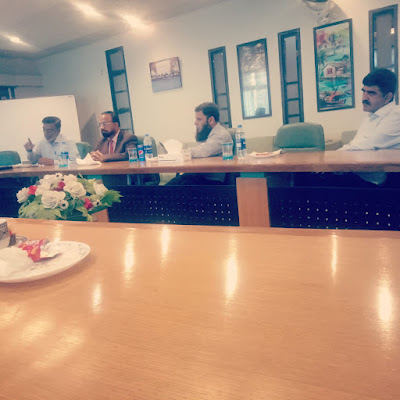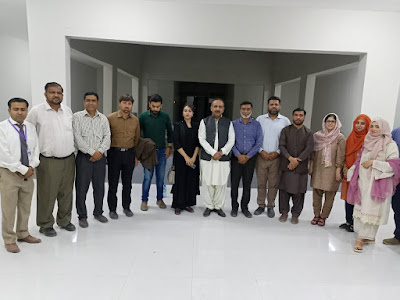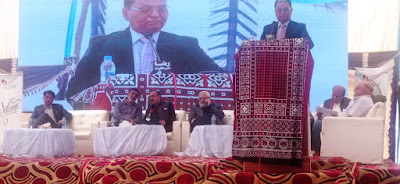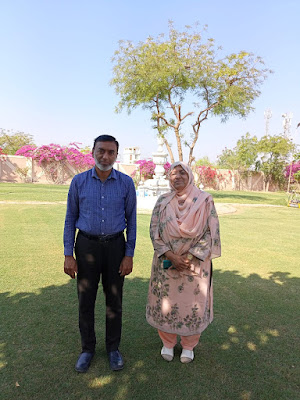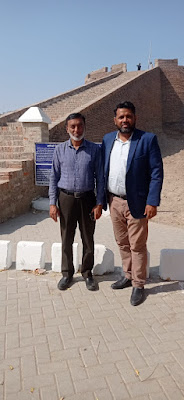Sunday 05 March 2023
Final Year Project 2023
Offered by
Engr. Prof. Dr. Tariq Javid
Chairperson
Department
of Biomedical Engineering
Faculty of
Engineering Sciences & Technology
Hamdard University
Karachi-74600
Pakistan
Engineers, Scientists, and
Technologists paly significant role for the national progress. In the
Engineering disciplines, the Biomedical Engineering discipline has the
significance of applying the fundamentals of engineering principles to improve
the practice of medicine. All faculties of the Hamdard University are linked to
this engineering discipline. In final year of the Bachelor of Engineering (Biomedical),
the students undertook their final year project that has two parts to complete
in a year time of their studies. This is an extensive group based activity
spans all the program learning objectives in the outcome based education system.
The policies and procedures are well defined for all components of the final
year project. Students may refer to the final year project coordinator for
details and consult at any stage of the project.
List of Final Year Projects with Tentative Short Description
Project 1 (Medical AI Devices). Design
and Implementation of Artificial Intelligence based Vital Signs Monitoring System
Description: Vital signs monitors are
used to periodically measure basic physiologic parameters, called vitals, such
as noninvasive blood pressure, oxygen saturation, pulse rate, and temperature.
These monitors are typically used in low-acuity areas, such as surgical and
medical floors, clinics, and emergency department triage, to track the status
of multiple low-acuity patients. In the current healthcare environment, there
is an increasing focus on automated documentation including electronic transfer
of data from the vital signs monitor to the hospital’s electronic medical
record system, in an effort to reduce some of the potential for errors
resulting from manual documentation of patient data. This final year project
design an artificial intelligence based vital sign monitoring system and
implements the design in the form of a practical application prototype. The
outcome of the project is in the form of a medical artificial intelligence
device capable of sending the vital signs to the emergency services and record
in the hospital medical database system.
Project 2 (GPU based).
Design and Implementation of Medical Artificial Intelligence Compute Engine
Description: This final year project
designs a compute engine for the medical artificial intelligence for automating
the clinical settings. Enabling AI to learn professional medical knowledge, to memorize
loads of health records, and to analyze medical images with computer vision, so
as to provide doctors with reliable and efficient assistance. For example, for
the medical imaging widely used today, AI can build models based on historical
data to analyze the medical images and quickly detect the lesions, thus
improving the efficiency of consultation. The outcome of this project is in the
form of an implementation of the design aka smart healthcare component for the
smart city.
Project 3 (Extensive-Efforts).
Design and Implementation of 4D Synthetic Human Pulse Generator
Description: This final year project
designs a four dimensional synthetic human pulse generator and implements the
design in the form of a software based solution. The physical parameters
related to a complete cardiac cycle are mathematically modeled and the 3D shape
of various stages are recorded to generate 4D synthetic human pulse. This final
year project is an important step towards a visionary future generation
solution to understand the variability in the cardiac cycle transition and help
establish or verify the overlapping or disconnect starting and ending of the
cardiac cycle.
Project 4 (Research-Oriented).
Biomedical Engineering Service Architecture towards Health Industry 5.0
Description: This final year project
creates an architecture for the biomedical engineering service for health
industry 5.0. The functions of the medical devices and coordination in the form
of useful information exchanges between these are graphically represented. The
main focus of this final year project is to use the designed architecture to
prepare essential basic workflows to support the future delivery of automated
medical service.






.jpeg)








